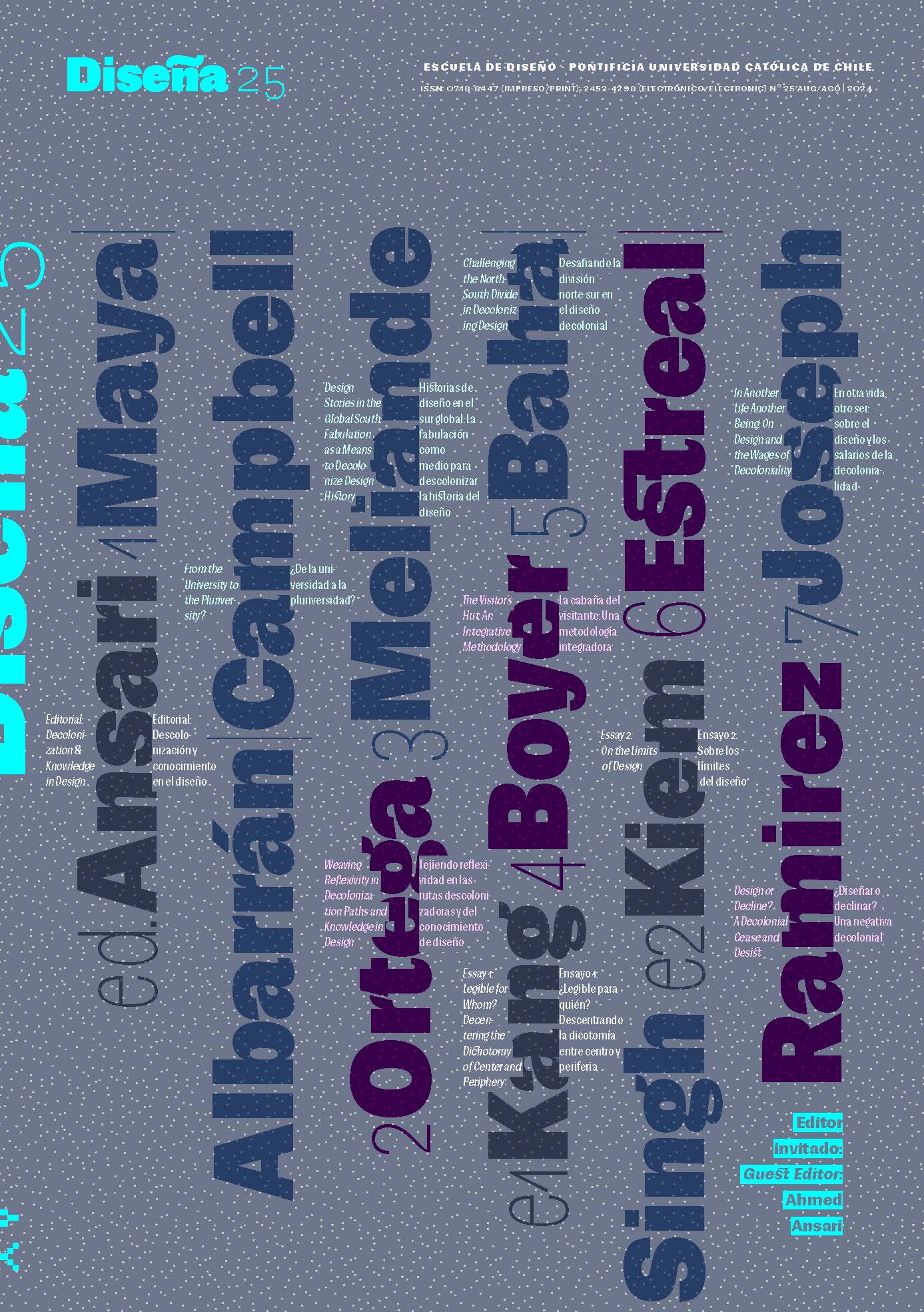Legible for Whom? Decentering the Dichotomy of Center and Periphery
Main Article Content
Abstract
What does it mean to have and sustain a decolonial design practice in the aftermath of political rupture? With an emphasis on elevating the heterogeneity of scale, dynamics, and lived realities, this work focuses on the ways designers and technologists determine the orientation of their worldmaking practices. This work prompts designers and technologists to consider the diverse range of politics of a locale in their efforts toward decoloniality.
Downloads
Article Details

This work is licensed under a Creative Commons Attribution-ShareAlike 4.0 International License.

This work is licensed under a Creative Commons Attribution-ShareAlike 4.0 International license.
COPYRIGHT NOTICE
All contents of this electronic edition are distributed under the Creative Commons license of "Attribution-ShareAlike 4.0 Internacional" (CC-BY-SA). Any total or partial reproduction of the material must mention its origin.
The rights of the published images belong to their authors, who grant to Diseña the license for its use. The management of the permits and the authorization of the publication of the images (or of any material) that contains copyright and its consequent rights of reproduction in this publication is the sole responsibility of the authors of the articles.
References
Akama, Y., & Yee, J. (2023). Entanglements of Designing Social Innovation in the Asia-Pacific. Routledge.
Ansari, A. (2019). Decolonizing Design through the Perspectives of Cosmological Others: Arguing for an Ontological Turn in Design Research and Practice. XRDS: Crossroads, The ACM Magazine for Students, 26(2), 16–19. https://doi.org/10.1145/3368048
Raval, N. (2021). Interrupting Invisibility in a Global World. ACM Interactions, 28(5), 27–31. https://doi.org/10.1145/346925
Sunderason, S. (2023, May 19). Freedom by Other Means: Art as Archives of Decolonisation. Third Text’s Online Forum / Living Archives. http://www.thirdtext.org/livingarchives-sunderason

